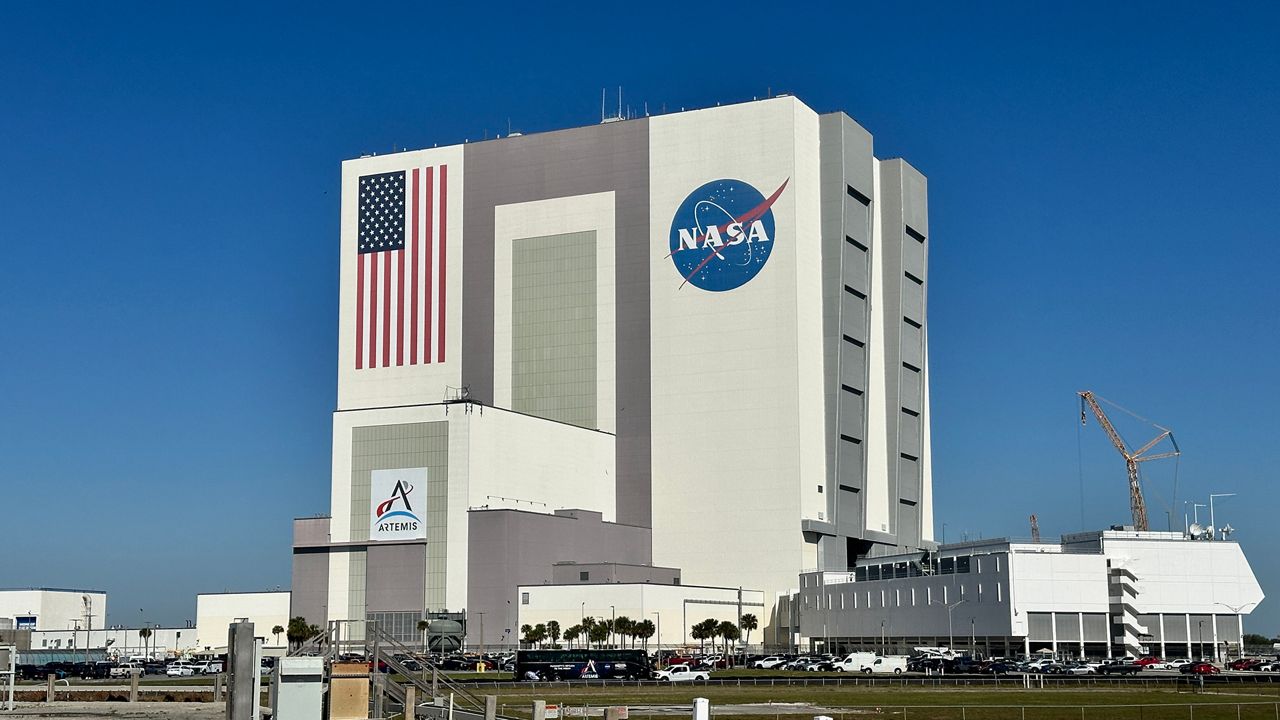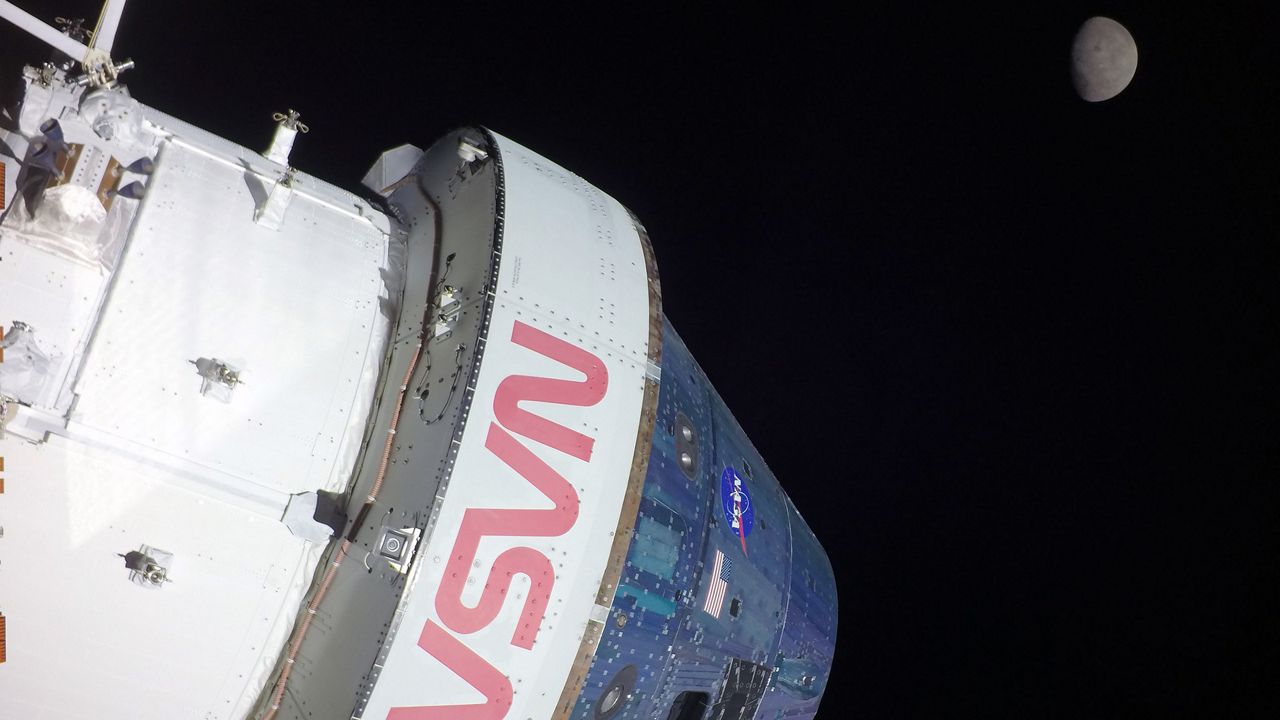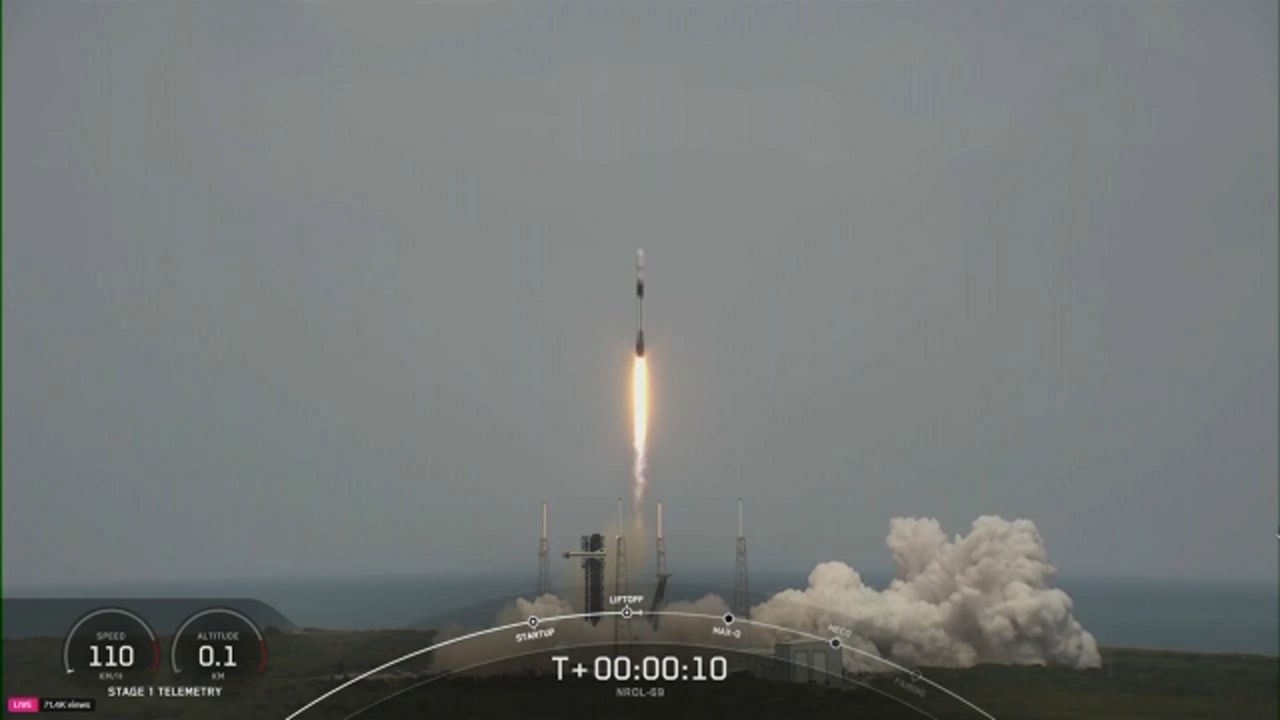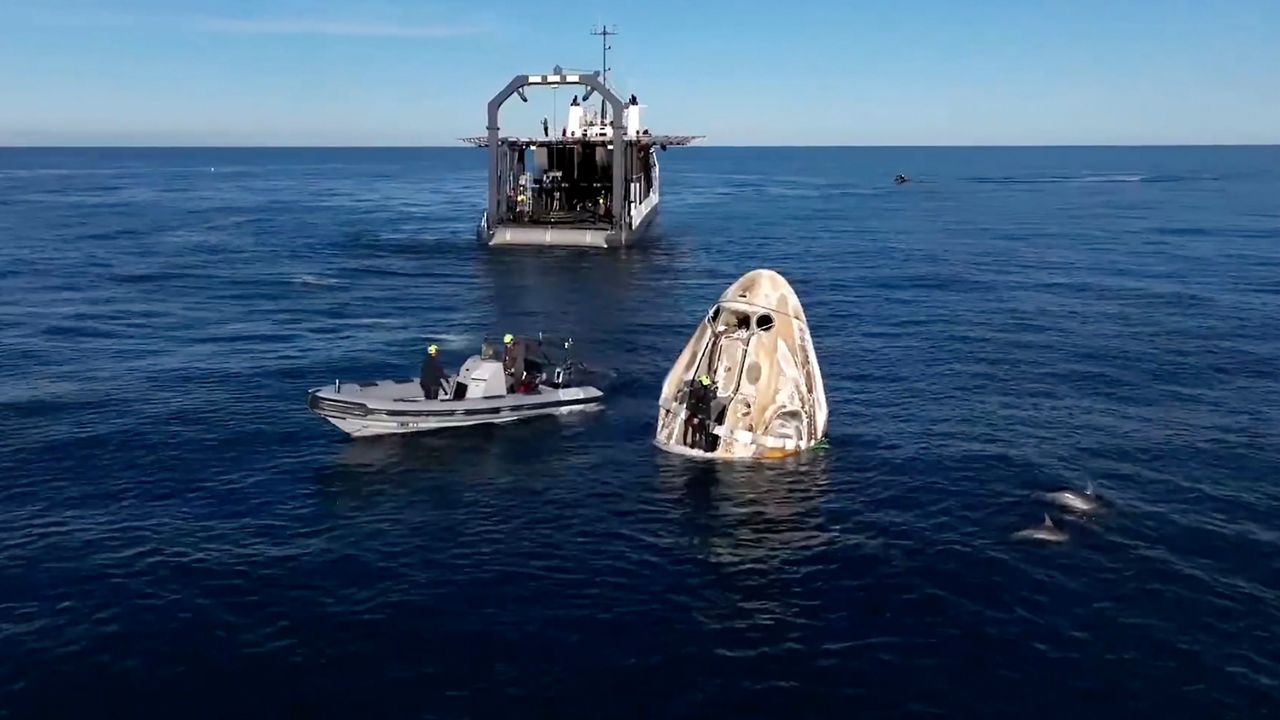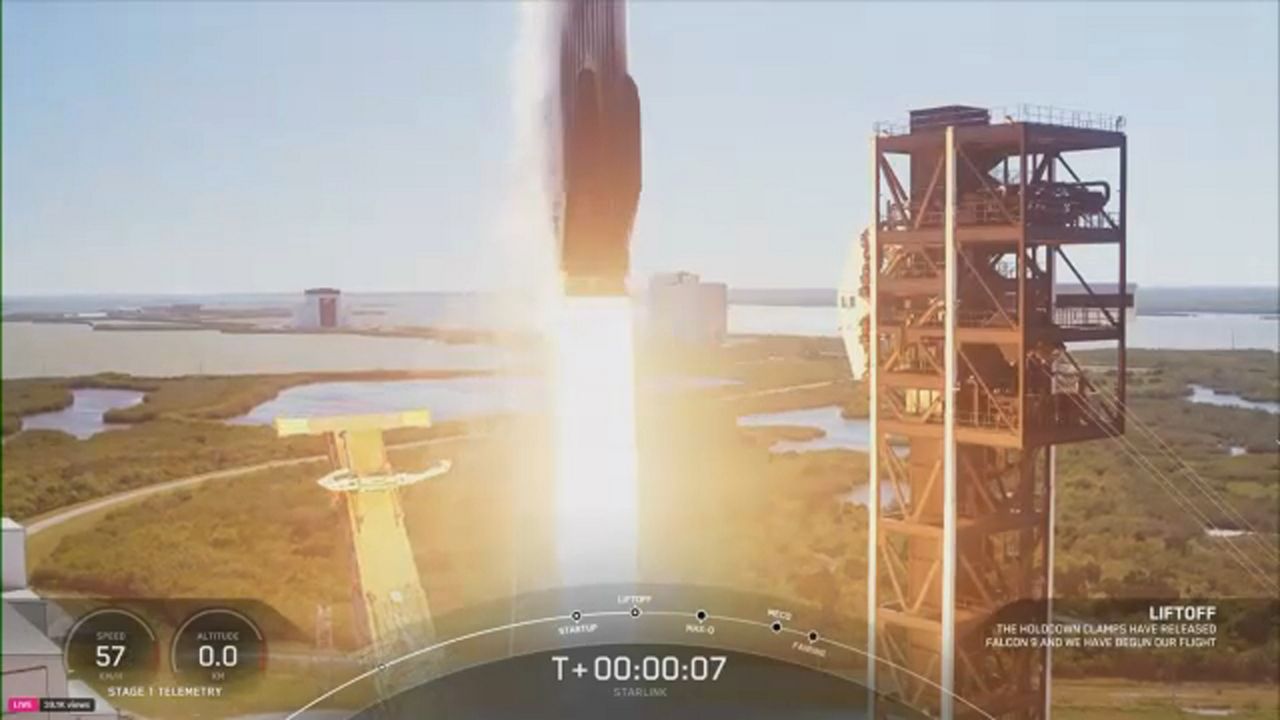CAPE CANAVERAL SPACE FORCE STATION — Tuesday night, SpaceX's Falcon 9 rocket sent up more than 20 Starlink satellites from Space Launch Complex 40 at Cape Canaveral Space Force Station.
What You Need To Know
- SpaceX's Falcon 9 rocket sent up more than 20 Starlink satellites
- Following the launch, the first-stage booster landed off the coast of the Bahamas for the first time
- Get more space coverage here ▶
Following the launch, the first-stage booster landed off the coast of the Bahamas for the first time.
The 45th Weather Squadron gave a 95% chance of good liftoff conditions, with the only concerns being the cumulus cloud rule.
Find out more about the weather criteria for a Falcon 9 launch.
Sweet 16
This will be the 16th mission for the Falcon 9's first-stage booster B1080. It has had 15 missions before this launch, including two crewed ones:
- ESA’s Euclid telescope
- Ax-2 crew mission
- Starlink 6-11 mission
- Starlink 6-24 mission
- Ax-3 crew mission
- CRS-30 mission
- Starlink 6-52 mission
- Starlink 6-62 mission
- ASTRA 1P
- NG-21 resupply mission
- Starlink 10-10 mission
- Starlink 6-69 mission
- Starlink 12-1 mission
- Starlink 12-2 mission
- Starlink 12-4 mission
After the stage separation, the first-stage rocket is expected to land on the droneship Just Read the Instructions that will be in the Atlantic Ocean, off the coast of the Bahamas.
And anyone vacationing or living in the Bahamas will get a treat: A sonic boom.
“There is the possibility that residents of and visitors to The Bahamas may hear one or more sonic booms during the landing, but what may be experienced will depend on weather and other conditions,” stated SpaceX.
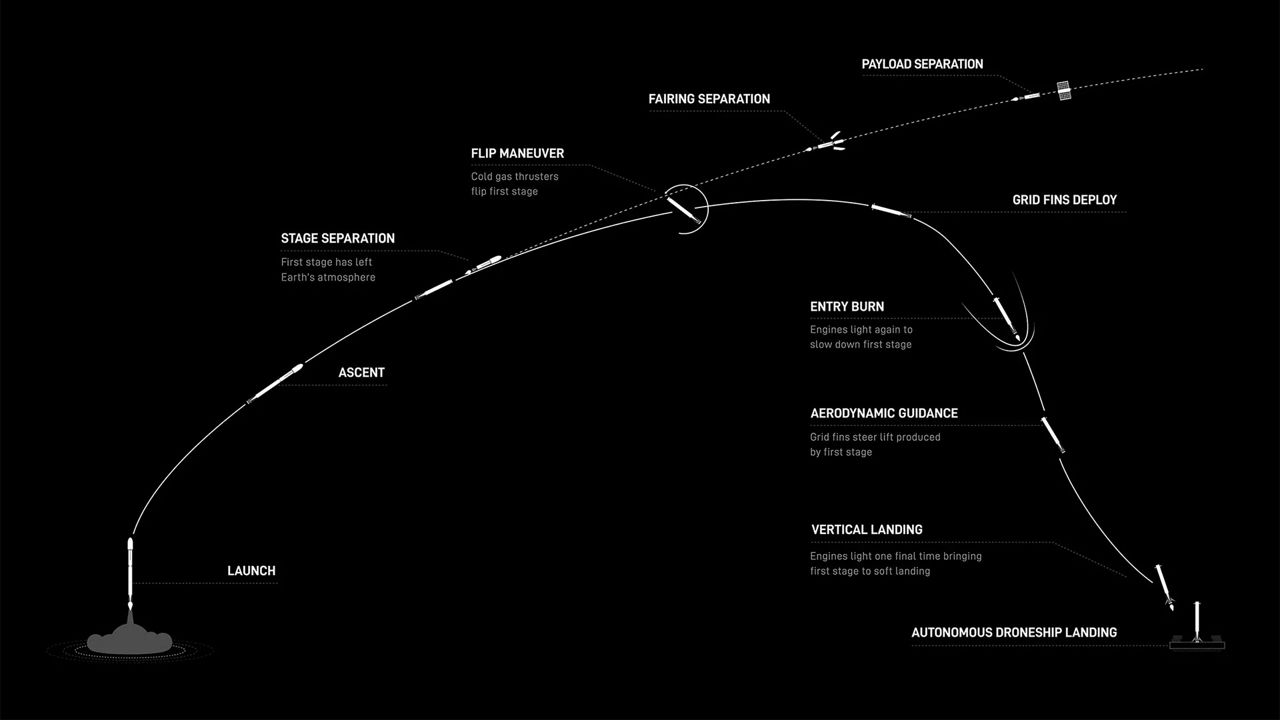
About the mission
The Starlink company will have 23 of its satellites launched to low-Earth orbit, which is already home to the thousands already there.
Once deployed and in their orbit, they will provide internet service to many parts of Earth.
SpaceX owns the Starlink company.
Harvard-Smithsonian Center for Astrophysics’ Dr. Jonathan McDowell has been keeping track of Starlink satellites.
Before this launch, McDowell recorded the following:
- 7,040 are in orbit
- 6,263 are in operational orbit







